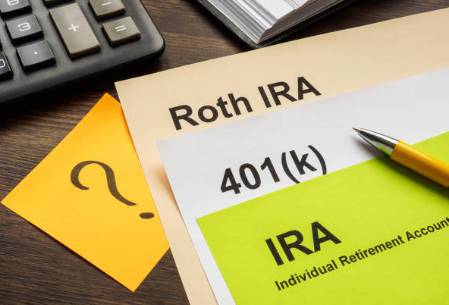Age-Specific Retirement Planning: How to Secure Your Future in Your 20s, 30s, and 40s
MANAGING MONEY
5 min read


Introduction to Retirement Planning
Retirement planning is an essential aspect of financial management that involves setting aside resources to ensure a comfortable lifestyle in one's later years. This process is not inherently tied to a specific age, but the implications of delaying retirement savings can significantly affect financial stability. Each age group—those in their 20s, 30s, and 40s—faces unique challenges and opportunities when it comes to preparing for retirement. Understanding these nuances is paramount, especially in today's rapidly changing retirement landscape.
The importance of early financial planning cannot be overstated. Starting to save for retirement while still in your 20s allows for greater compounding interest, which can lead to a more secure financial future. However, misconceptions often cloud this critical phase. Many young adults may underestimate the necessity of retirement savings, believing they have ample time to prepare. Conversely, individuals in their 30s and 40s may feel overwhelmed by existing commitments such as mortgages and family expenses, leading to the false notion that it is too late to establish a solid retirement plan.
Retirement Planning in Your 20s
Embarking on your financial journey in your 20s is vital for establishing a secure retirement in the future. During this decade, individuals should focus on building a strong financial foundation that can support their long-term goals. A key aspect of this foundation is creating an emergency fund, which should ideally cover three to six months of living expenses. This fund acts as a safety net against unexpected financial challenges, allowing you to stay on track without derailing your retirement plans.
Another important consideration is managing student loans. Successfully paying off or at least minimizing these debts early on will free up your financial resources, making it easier to contribute to retirement accounts. Allocating extra funds to loan repayment can reduce the overall interest paid, ultimately allowing for more savings in the long run.
One of the most effective methods to secure your financial future is to start investing in retirement accounts, such as 401(k) plans or IRAs, as early as possible. Many employers offer matching contributions for 401(k) plans, which not only boosts your retirement savings but also serves as a valuable incentive to begin your investing journey. Even small contributions can harness the power of compound interest, leading to exponential growth over time.
Maintaining a monthly budget is essential for maximizing your savings potential. By tracking income and expenses, you can identify areas to cut back and allocate more funds toward retirement savings. Implementing budgeting apps or simple spreadsheets can help streamline this process and maintain financial accountability.
In real-life scenarios, young individuals often overlook the critical importance of planning for retirement. Common pitfalls include procrastination and underestimating the significance of small savings habits. By addressing these elements early, you can set yourself on a path toward financial security, ultimately ensuring that you have ample resources to enjoy your retirement years.
Retirement Planning in Your 30s
As individuals enter their 30s, they often experience significant changes in their financial landscape. This period typically brings increased earning potential, leading to an opportune time for reassessing retirement strategies. A key focus should be on increasing retirement contributions; as income rises, it is essential to allocate a larger portion of one’s earnings towards retirement accounts. Many employers offer matching contributions, which can substantially enhance retirement savings. Understanding how these employer-sponsored retirement plans function and maximizing contributions to take full advantage of these benefits is crucial for long-term financial security.
Diversification of investment portfolios also plays a pivotal role in retirement planning during this decade. As financial situations evolve, it’s important to evaluate and adjust asset allocation in line with market conditions and personal risk tolerance. Incorporating a mix of asset classes—such as stocks, bonds, and real estate—can help to mitigate risk while potentially enhancing returns over time. Consulting with a financial advisor can provide valuable insights into developing a balanced portfolio tailored to one’s retirement goals.
Additionally, protecting assets through proper insurance and estate planning cannot be overlooked. Life insurance, health insurance, and disability insurance are essential for safeguarding against unforeseen circumstances that could jeopardize financial stability. Furthermore, establishing an estate plan ensures that one's assets are appropriately distributed according to individual wishes while minimizing taxes and legal complications.
It’s crucial to recognize the balance between family responsibilities and the need for savings. As life progresses, priorities may shift due to factors such as home ownership, child-rearing, or caring for aging parents. Setting clear financial goals and making a concerted effort to adjust them as needed can help individuals stay on track for a comfortable retirement, ensuring that both immediate and long-term financial needs are met.
Retirement Planning in Your 40s
As individuals enter their 40s, the importance of retirement planning becomes increasingly apparent. This pivotal decade often marks a transition towards more serious financial commitments and responsibilities. Consequently, it is essential to adopt advanced strategies to optimize retirement savings while preparing for the financial realities of the years ahead.
One effective method to enhance retirement contributions is to take advantage of catch-up contributions. Individuals aged 50 and older are allowed to contribute extra amounts to their retirement accounts, such as 401(k)s and IRAs. This feature can play a vital role in accelerating savings. Moreover, it is crucial to reassess your current investment strategies in light of personal risk tolerance, considering both current market conditions and future retirement goals.
Utilizing retirement calculators can significantly assist in determining the necessary savings rate to maintain desired retirement living standards. These tools can provide insights into how much money needs to be accrued and help prioritize expenses. Regular financial reviews should also become a habit during this decade, allowing for adjustments based on changing life circumstances, economic conditions, or retirement goals.
Engaging with options like traditional and Roth IRAs becomes particularly important at this stage. Understanding the distinctions between these accounts—such as tax implications and withdrawal rules—will ensure informed and strategic decisions towards achieving a secure retirement. Additionally, as life expectancy increases, planning for healthcare costs should remain a priority. This includes considering long-term care insurance and health savings accounts as strategies to protect against unforeseen medical expenses.
It is important to consider how potential career changes may influence retirement plans. Career advancement, transitions, or shifts in job stability can impact retirement savings and timelines. Thus, developing a flexible retirement strategy is essential to accommodate these dynamics.






